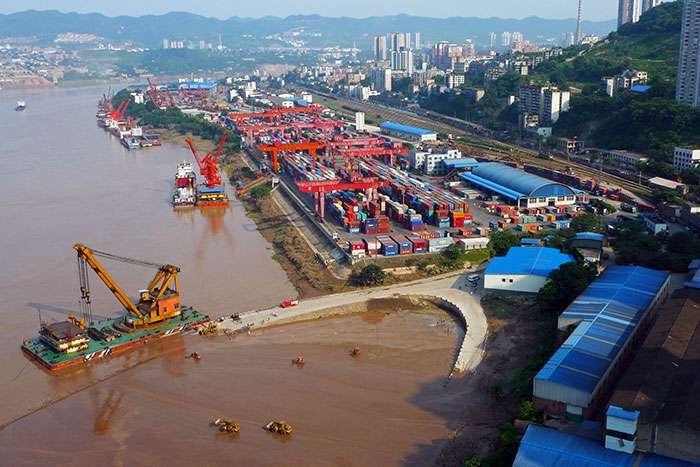Key Takeaways:
- When the link between traditional securities is disrupted, as happens with a decoupling, investors and financial experts get concerned.
- Market decoupling is directly related to asset allocation, risk management, and market stability.
- For risk mitigation and diversification, it is essential to comprehend causes, consequences, and related aspects.
- Resilience may be developed by investors through constant portfolio reviews, flexibility, and knowledge maintenance.

Decoupling in finance means an inexplicable process between assets of a different kind weaken or stop working. In the end, this leads to assets moving independently rather than in sync with another asset. In this article, we will explore what decoupling actually means in finance. As well as review simple examples and future implications. Moreover, we will discuss some common additional things you need to know.
What Is Decoupling?
Decoupling in finance is what happens when the traditional correlations between assets or markets break down and the effects go separately, affecting the interactions non-linearly. At this stage, the notion that assets move simultaneously is refuted. Alternatively, commerce may be affected by other variables that cause decoupling, such as investor behavior, governmental regulations, or geopolitical events.
Understanding Decoupling:
An unsettling situation arises when the variables that used to correlate are undergoing transformations. Investors’ core business perceptions and financial professionals’ routine operations are the most affected by decoupling.
In addition, it also causes price jumps and spikes, thereby creating affectedness in prices and correlation. In other words, the market participants become more aware that they should be ready to react immediately.
They modify their strategies while the market in turn shifts. Identifying the fundamental causes and dynamics of decoupling is the most important matter in order to make well-conceived decisions on risk hedging with the investment portfolio. Changes in market dynamics, trade policies, advancements in technology, and recent international affairs contribute to decoupling of China and the US.
Decoupling of Markets:
The decoupling of the markets means that if markets were previously connected, now the opposite happens and they start moving in different ways. In times of general economic turmoil and political instability, investors might switch over to safe-haven assets.
This would result in the already existing correlation between stocks and bonds to fade or completely break off. This detaching process can lead to a range of consequences. It might include portfolio management, risk adjustment agendas, and overall market balance. The breaking apart can be noticed in the local situation as well as in the domestic market or its sectors and submarkets.
Decoupling vs. Recoupling:
While decoupling signals the finalization of a market, recoupling signifies a new market bonding process. Decoupling, dissolves the relationship between previously correlated assets, preventing them from influencing each other events.
In terms of synchronization, a shift away from coordination of the phase to conformity of movement during a desynchronized episode is referred to as recoupling. Monitor the trend to adjust investment strategies as needed, as it may affect portfolio performance and increase investment risks.
Recoupling happens for a couple of reasons, such as the alteration of macroeconomic conditions, economic policies, or preferences of the investors, causing assets or markets to reconfirm their associations.
Special Considerations:
During times of disconnecting, investors must consider key factors to navigate markets efficiently. These include checking the implications for portfolio rebalancing and understanding the risks associated with deviating from a benchmark. Still retaining investment portfolios that are easily adaptable to the current climate. Put differently, decoupling can result in favorable or unfavorable interactions between assets. To reduce risks and seize opportunities, this calls for reevaluating portfolios and sometimes making modifications.
Investors should also think about the decoupling in its context and long-term objectives, tolerance of risk, and strategies for the appreciation of assets.
Conclusion:
There is no alternative for investors and financial experts to keep decoupling trends, understanding them, and adapting to them in order to be on top of their game in terms of reaction to a rapidly changing market environment. Investors are better off by learning relevant information, taking some breathers, and evaluating portfolio synergies over and over again in order to manage risks and thrive amidst all investment physics. With market development being the engine key to successful investing, what is essential is to stay in touch with the latest market and be prepared to modify strategies when need be.
FAQs:
What Does the United States and China Decouple Mean?
When the United States and China's economies and financial systems separate due to geopolitical tensions or different monetary and fiscal policies, it is referred to as decoupling. This phenomenon causes individual market movements that impact the world's markets and investor moods.
What Is the Decoupling Point for Customer Orders?
A strategic inventory management concept utilized in supply chain management is the customer order decoupling point. In order to improve supply chain flexibility, it pinpoints the stage of the manufacturing process at which inventory is strategically positioned to separate client orders from the production schedule.
What Is Decoupling in Sustainable Development?
In sustainable development, decoupling is the process of using resource efficiency and sustainable consumption patterns to achieve economic growth without accelerating environmental degradation.
How Does Market Stability Affect Decoupling?
When formerly connected markets begin to move independently, decoupling can cause volatility and uncertainty, which can destabilize markets. This has an impact on investor mood and the stability of the market as a whole; therefore, proactive monitoring and plan modifications are needed to properly manage shifting dynamics.
How Can Investors Adjust to Trends of Decoupling?
By being knowledgeable, adaptable, and conducting regular portfolio reviews, investors may adjust. In order to minimize risks and take advantage of opportunities, they must stay current on market events, comprehend the dynamics and causes of decoupling, and modify their investing strategies.
What is Utility Rate Decoupling?
By separating utility revenue from sales volume, a method known as utility rate decoupling encourages energy efficiency without imposing financial penalties and advances sustainable energy practices.




